Functional digestive disorders and congenital peculiarities of the structure of the biliary tract, which determine the specificity of the digestive system of children, occupy a considerable part of the calls to the doctor for a pediatrician or gastroenterologist.
Parents turn to specialists, complaining of babies for abdominal pain, nausea in the morning and heaviness in the side, a taste of bitterness in the tongue.
After the examination, the diagnosis “Dyskinesia of the bile ducts” is often found, then – DZHVP, and such an acronym is often incomprehensible to parents, which causes anxiety and worries about further treatment. What is DZHVP, where are the problems with the structure of the gallbladder, by the type of its inflection and how it can affect the further life of the kids?
About the diagnosis and pathology
Functional digestive disorders and small anomalies in the development of the biliary system and the gallbladder are referred to the subjects of disputes in medical circles among pediatricians and children’s gastroenterologists. Far from all of the specialists, especially in European countries, recognize dyskinesia of the bile ducts (this is how the abbreviation of DZHVP stands for) is a separate pathology and it is considered competent to make such a diagnosis.
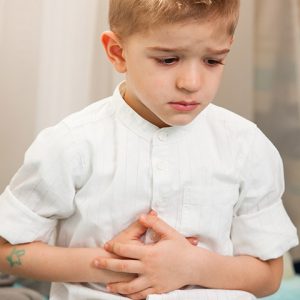
Many doctors consider such manifestations to be solely the fault of parents who do not follow the principles of rational nutrition of children, thereby provoking such functional deviations.
Meanwhile, another part of specialists notes that similar problems with digestion can be detected in children who eat properly, and also do not always register with children who eat even junk food. In this regard, referring to these pathologies to functional abnormalities, and having complaints from children and parents, the data obtained by ultrasound and duodenal sounding, most specialists tend not to wait-and-see tactics – “it will outgrow itself” but to active treatment, which consists mostly of non-medicinal effects. In the treatment of this particular pathology, the role of parents and the formation of a healthy lifestyle and proper nutrition are great.
The term DZHVP: what is meant by it?
Under the dyskinesia of the bile ducts or the letters DZHVP, in the literal interpretation of terms we mean the violation of the bile movement inside the bile ducts (discomfort, kinesio – motor function). For a similar situation – specifically the movement of bile through intrahepatic ducts, bile capillaries and common choledocha, as well as problems with its release from the gallbladder during the digestive process.
If to speak in general, under the concept of DZHV falls breach of contractility of the gallbladder and all its sphincters, because of what bile can not leave the cavity of the bladder in time and penetrate to the place of its direct action – the lumen of the 12-типерстной guts, therefore this phenomenon can violate the digestive function. The bile can stagnate for a long time and slip off languidly, or ahead of time, while it is not yet needed, it is sharply and much allocated into the lumen of the intestine. Due to this, digestion problems are possible, but not always and not all children.
Does DZHVP always lead to digestive disorders?
To understand the problems that are possible in the presence of DZHVP, it is worth discussing the question concerning the functions of the liver and bile, as well as its role in the digestive processes. So, bile refers to the digestive secret, actively involved in the processes of digestion and assimilation of food. It is produced by the liver cells, then it is secreted into the bile ducts inside the liver, collected in the ducts and flows along the common choledoch into the reservoir where it is stored and stored – the gall bladder.
The bile is unique in composition, it contains a lot of biologically active and important compounds for the body – bile acids, active enzymes of digestion, actively saponifying, splitting fats, cholesterol, bilirubin and other pigments, which are dangerous for the body, but are neutralized in the intestine and are withdrawn with a chair. Due to the bile, as well as its active secretion into the lumen of the intestine, the synthesis of digestive hormonal compounds and enzymes is triggered and the pancreas is started. It is difficult to overestimate the function of bile in a healthy child’s body.
Bile is secreted into the intestinal lumen not constantly, but in portions, under the influence of stimuli from the digestive tube, which is irritated by the intake of food – breakfast, lunch or snack.
Impulses from the stomach or lumen of the 12-типерстной of the intestine lead to a relaxation of the sphincter, as a result of which the gallbladder contractes, releasing the previously accumulated bile in the intestinal cavity.
In its lumen, in addition to digesting fatty foods, bile has a number of other important functions:
- Emulsifies fats, splits them up to small droplets that are easily absorbed by the intestinal wall
- Having a pronounced bactericidal effect, finishes pathogenic microorganisms that did not have time to neutralize the acid in the stomach
- Inactivates gastric acid, forming an alkaline environment of the intestine
- Activates digestive enzymes, stimulates the production of such important digestive hormones as cholecystokinin and secretin, and they activate pancreatic
- Irritates the walls of the intestines, due to which activates the contraction and does not allow stagnant food mush, prevents constipation when eating thick food
- Do not let the food gruel wander and swell the intestines.
- Thus, bile helps to assimilate fats, prevents constipation and helps in digesting carbohydrates and proteins by activating the functions of pancreatic juices.
Against the background of DZHVP production of bile is not timely and not in the amount that is needed. Either it is not enough and it’s too late to fully digest food, or too much, it stands out sharply, painfully, with a spasm of the bladder.
As a result, digestion in the intestines and even the stomach suffers, due to which pains, constipation, nausea, swelling, diarrhea and bitterness in the mouth are formed.
Who happens: children at risk
The majority of children suffering from DZHVP are pre-school and school-age kids, who already have various digestive problems, including those associated with improper nutrition (fast foods, sodas, snacks, chips, etc.). In rare cases, DZHVP is placed in children before the age of five, for them, such problems are not characteristic, because in kindergartens are relatively normally monitor food and offer healthy food.
About 85-90% of children suffering from DZHVP describe manifestations in bright colors with various, varying from time to time manifestations:
But with all these symptoms there are no defects in the structure of the stomach or intestines, as well as the liver and the gall bladder itself. Often, in DZHVP, there may be an inflection in the region of the body or neck of the bladder, and it does not appear at all and not always.
DZHVP is not considered a life-threatening organic pathology, it is a violation of the biliary system, a kind of immaturity and uncoordinated cutaneous apparatus. In the ducts there are no stones, tumors or other obstacles, because of which bile could not enter the intestine. Bubble and ducts are either “active rush” or “lazy lazy.”
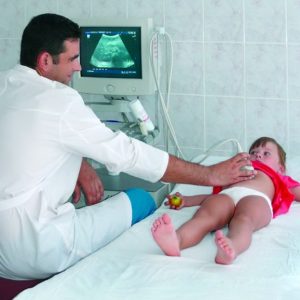
This is due to the work of the autonomic nervous system, the characteristics of the child, his nutrition and some other factors. So, the reduction of the walls of the gallbladder regulates the special intestinal hormones that secrete the duodenum. If it is irritated or inflamed, the secretion of hormones will be wrong – this leads to problems with the separation of bile. Therefore, the manifestations of DZHVP is a concomitant pathology in the presence of various inflammatory processes of the intestine – worms, lamblia or enteritis against a background of poisoning or intestinal infection.
Rarely, the cause of the development of DZHVP can be stagnation of bile inside the cavity of the bladder due to the anomaly of the structure of the ducts, the presence of structural disorders in them, with the development of cholelithiasis (the child has an extremely rare pathology).
By its nature, DZHVP and tone in the region of the bladder have variants in the form of:
- Hypertension (excessively strained and severely shrinking walls)
- Hypotension (atony, when the walls are relaxed and contract weakly and inactive).
- Dystonia – when there are problems with tone and contraction, each time they are different.
- The factors predisposing to DZHW in children

In fact, the problems of contractility and tone of the bladder are temporary, they mainly arise due to immaturity of digestion and problems with the coordination of the nervous system during the ripening of the digestive tract. Maturation of the digestive tube occurs gradually, approximately to school age.
In addition, some children have a hereditary predisposition to the high excitability of the muscular sphincter apparatus, the predominance of sympathetic innervation in the choleric temperament, and the consequences of severe labor with hypoxia and CNS trauma. It forms a muscle weakness. The effects of rickets, anemia, and the appearance of it on the strength of prematurity or hypotrophy may influence the formation of DZHW.
If you disassemble all the mechanisms that predispose to digestive disorders and the formation of DZHVP, then the first place is neurosis. This is a kind of functional disorder of the nervous system, which leads to an imbalance in the mechanisms of regulation of the muscles of the bladder and its sphincters.
No less active is the decrease in the synthesis of cholecystokinin by the intestinal wall. If its influence is completely absent or weakly affected, bile flows weakly.
To reduce the walls of the biliary system and the bladder affects the hormone secreted by the pancreas – glucagon.
In a healthy child, born without problems, the processes of excitability and inhibitory influences are balanced, and in pathology, either one process or the other predominates. If the bile stagnates and concentrates, its characteristics – viscosity, composition and fluidity, can change, it can lose its bactericidal properties, thickens and can create conditions for the formation of crystals, and then stones. Usually, DZHVP is considered a predisposing factor for the further development of calculous cholecystitis.
Variants of development of DZHVP in children
If we proceed from the cause of the problem and the origin of the pathology, we can distinguish two variants of DZHVP – either primary or secondary variants of the course:
The primary variant of DZHVP develops as a result of the initial disorder of the nervous system. Such a process is typical for children with neuroses or vegetative-vascular dystonia, due to the presence of special anomalies in their constitution – exudative-catarrhal diathesis, lymphatic-hypoplastic. In the development of this type of DZHVP, a special role is assigned to nutrition problems – long interruptions between meals, violent feeding or overeating, excessive consumption of fatty or fried foods have an effect. Risk factors are also child-borne colds or intestinal infections of viral origin, as well as salmonella infection, the development of microbial dysentery or acute viral hepatitis.
A significant role in the development of DZHVP allergenic organism.
A secondary variant of DZHVP is formed as a complication in the presence of existing digestive diseases – often there are chronic cholecystitis and inflammatory process of the liver, cholangitis and helminthic invasion, duodenitis, colitis. Especially often, DZHVP is formed with the presence of giardiasis. Against the backdrop of parasitic lamblia in the area of the duodenum, dystrophy of the shell is formed, which leads to a violation of the secretion of digestive hormones. This leads to difficulty in bile secretion, and bile has a harmful effect on Giardia.
Types of DZHVP: contractility and tone
In addition to origin, DZHVP is divided into several types, based on their ability to reduce the bladder and tone of his muscles and sphincter apparatus.
There are two main types of DZHVP:
- dyskinesia of hypertonic hyperkinetic flow with abrupt contractions and ejection of large portions of bile.
- dyskinesia hypotonic, hypokinetic type with sluggish contractions and a small outflow of bile to the gut.
With both variants of DZHV, an abnormal amount of bile enters the intestinal lumen, which leads to digestive disturbances and the appearance of unpleasant symptoms from the intestine. In the initial period, the asymptomatic course of the disease is possible, but then, with a close examination, the first symptoms of digestive disorders can be noted – nausea, especially in the morning, a feeling of heaviness in the abdomen and navel, and stool disorders – alternating diarrhea with constipation or persistent constipation against bloating and drilling. The most typical manifestations of discomfort after taking fatty foods, fast food, or after eating fried or spicy, salty. In case of such complaints, it is necessary to consult a doctor and conduct a survey to identify a specific type of DZHVP, since the principles of treatment vary considerably.
DZHVP on hypertensive type: features in children
If the child has a hypertonic and hyperkinetic type of pathology, an increase in activity of the parasympathetic department will be characteristic. In fact, this is part of the manifestations of the primary neurosis, disorders of the nervous system with pronounced disturbances in the activity of internal organs.
Characteristic symptoms for this type of DZHVP are:
pain syndrome: soreness of an attacking character localized in the zone of the right hypochondrium, sometimes giving to the region of the subscapular area or the right shoulder, including against the background of deep breaths. The pain is formed after the intake of fatty food and its large volume, with a violation of the diet, as well as after physical stress, stress and stress.
The duration of pain is short, well removed with anesthetics or antispasmodics. When attacks are usually typical of aggression or anxiety, there may be nausea to vomiting, headache or attacks of palpitations, the allocation of a large volume of urine.
The feeling of the tummy results in soreness in the projection zone of the bladder.
All the time between attacks, when there are no exacerbations of the process, there is no soreness in the abdomen or there is an unexpressed sensitivity to palpation of the right subcostal area. The liver in case of such pathology does not increase, there are no signs of toxicosis.
There is a similar pathology in the form of seizures, and between the attacks the children are quite well themselves, the kids do not have any complaints. Either stomach problems in the form of painful attacks or spasms, as well as discomfort in the right side or near the umbilical area are possible. This is typical for irritating food – abundant use of chocolate or ice cream, eating chips with soda. These seizures are well eliminated by taking antispasmodics (papaverine or no-shpa in age doses).
DZHVP by hypotonic type: features in children
In the presence of hypotension of the bladder and decreased motor activity in the area of bile ducts, there are usually other symptoms. They are typical for children who have an increased activity of the sympathetic department. They usually complain about:
Painful, pressing character, which usually spreads on the right side, dull and almost constant in the hypochondrium. Usually it is accompanied by a feeling of heaviness, pressure with a bursting in the zone of the right side, located just below the ribs. Usually, pain intensification occurs against the background of provoking unfavorable factors. However, as such strong, acute pain is almost not formed.
on the background of pain discomfort in the abdomen of a non-localized nature occurs, nausea and taste of bitterness in the tongue, a decrease in appetite until the refusal to eat. However, vomiting attacks and stool problems are not typical.
palpation of the abdomen reveals soreness on the projection of the gallbladder, especially against the background of exacerbation. In this case, a special symptom of Ortner can be revealed – tapping the palm of the palm along the border of the lower ribs (only on the right side), pain can increase.
for this type of DZHVP is typical of stagnation of bile inside the bladder (cholestasis), which leads to the detection of an increase in the size of the liver, while it is elastic and soft and does not hurt during palpation. When carrying out duodenal probing or using cholagogue, bile flow is stimulated, which leads to a decrease in liver size and size of the bladder.
Important
The condition of DZHVP is not an isolated single pathology in a child, but only one of the manifestations of a systemic neurosis of its organism. In addition to problems with the operation of the biliary tract, various organs and systems that help maintain the constancy of the internal environment of the child’s organism may be affected.
In addition to identifying DZHVP, other functional abnormalities in the functioning of many systems and organs – the heart and blood vessels, the nervous system and the respiratory tract – can also be determined.
Typical in the context of stagnation of bile structural changes in its composition – the concentration of proteins and fat components is disturbed, which significantly affects the subsequent digestion of such a bile food. Due to changes in the composition and separation of bile, the digestive functions of the body may suffer – the opportunistic flora actively propagates in the lumen of the intestine, synthesis and absorption of vitamins, especially the fat-soluble group, may suffer.
Diagnosis of DZHVP in childhood
Although it seems that the pathology is obvious, but it is not always easy and easy to make an accurate diagnosis. A preliminary diagnosis can be made by a doctor on the basis of typical complaints that the child himself makes, and supplement the stories of the parents. But this is not enough to start treatment, you need to determine the cause of DZHVP (that is, to identify its primary or secondary), as well as refinement of the type of the tone and motor skills. To do this, you need a whole cycle of tests and instrumental examinations, which are sometimes extremely unpleasant for the child.
It is important to diagnose by excluding more serious pathologies – parasitic infestation, infectious lesions, inflammatory processes and congenital defects in the structure of the liver and biliary system.
The beginning of the diagnosis is a detailed examination of the doctor and palpation of the abdomen, as well as the study of the entire body of the child with the identification of typical symptoms that are characteristic of the liver lesions or areas of the biliary system. They include:
The lagging of the tongue is gray, yellowish or brown
Syndrome “dirty neck” – expressed pigmentation of folds and “dirty elbows with knees”, the formation of light pigmentation spots.
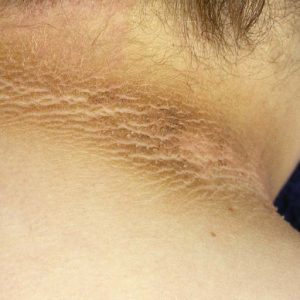
Signs of a neurosis, revealed as an increase in dermatographism (skin reactions to the application of lines in the form of light or pink-red stripes)
Increased irritability and excitability.
But only the examination and symptoms will be small, it is necessary to carry out ultrasound of the abdominal cavity and aim the liver with the structure of the gallbladder and identify the state of motility. First of all, ultrasound scans the size of the bladder, its location and shape, patency, width of the bile ducts and their congenital anomalies, deformities, stones in the duct or bladder area (children are rare).
Then ultrasound is performed with trial breakfasts or stimulants to determine the type of dyskinesia. Unlike many others, ultrasound is painless and safe, it does not bring discomfort to the baby.ImportantSpecial preparation for ultrasound is not necessary, it is important only to come in the morning on an empty stomach so that you can also conduct functional tests to determine the specific type of DZHVP.
Features of ultrasound for dyskinesia
If suspected of DZHVP, ultrasound can be performed several times to assess not only the anatomy of the bile secretion organs, but also their functionality. Therefore, it is important to prepare for the study in advance, correctly and fully. Determine the type of DZHVP it is possible on an empty stomach, applying during the procedure cholagogue breakfasts or medicinal preparations – stimulants of the secretion of juices.
The procedure is simple:
the first stage is an ultrasound examination on an empty stomach with an assessment of the structure of the liver and bile ducts, the position and size of the gallbladder, the volume of bile inside it.the child is given a cholagogue breakfast consisting of fatty foods – yoghurt, cream, sour cream, and waits about 45 minutes, then the ultrasound of the biliary system is again performed with an assessment of the degree of contractility of the walls of the bladder, emptying it of bile, the condition of the bile ducts,.
Based on ultrasound images, you can see the initial size of the gallbladder on an empty stomach after eating, the presence of its complete contraction and emptying or partial, the presence of an inflection of the neck, whether such an anomaly prevents the digestive process.ImportantThe presence of detected changes in the biliary system and the bladder does not entitle you to insert a diagnosis and start treatment. The ultrasound specialist only ascertains the presence or absence of any functional malfunctions in the biliary system of the child.
Only a pediatrician or a narrow specialist, on the basis of earlier analyzes, examination data, complaints and all problems revealed by ultrasound examination, makes a conclusion about the presence of DZHVP and its type, the causes of pathology formation and the need for treatment. If there is only ultrasound data, but there are no complaints, tenderness, problems with stool and digestion with digestion of food, a diagnosis is not made – this is not justified.
If the diagnosis is in doubt: clarifying procedures
Often, only these reviews and complaints, as well as information obtained with ultrasound and analysis, will not be enough to finalize the diagnosis, the type of DZHVP has not been clarified. Then it is not very pleasant for the child, but extremely informative for the specialist invasive examination – duodenal sounding with obtaining fractions of bile and intestinal juice.
This technique by introducing a tube into the lumen of the intestine allows obtaining portions of the contents with bile, evaluating its composition and activity in relation to digestion. Bile is taken at regular intervals, using stimulants of secretion and trial breakfasts, evaluating the gallbladder and the secretion of bile in the lumen of the intestine.
On the basis of the volume of bile portions and the rate of its release into the lumen of the intestine, one can assess the state of the bile duct tone and motility, as well as the performance of individual sections in the biliary tract – in the region of the sphincter of the bladder, which extract bile from it and also in the region of the common bile duct.
The obtained bile portions are transferred to the laboratory, where it is possible to determine its physico-chemical properties – cholesterol level, bilirubin fractions and bile acids, the presence of parasites.
In children with hyperkinetic problems, the level of cholesterol and fats is lowered on the background of DZHVP, and on the background of the hypokinetic type, their increase is typical.
It is extremely rare in the case of detection of developmental anomalies that require prompt correction in the future, use radiographic cholecystography with contrast, a method that allows you to visually assess the structure of the bile ducts.
Treatment: food, restrictions, drugs
The first, with which you need to start therapy of established DZHVP of any type – this is a special dietary correction, and doctors call it “the diet of three F”. It will also be needed for children who have no problems with digestion, but problems with the bladder have been found – its inflections, difficulty with emptying and difficulty in the outflow of bile from the bladder.
So, when a diet of three “F” is excluded from the diet of babies:
- Fatty foods
- Fried products (including fast food)
- Yolks and dishes with them.
These products have a pronounced irritating liver and biliary system effect, lead to stress work and excessive separation of bile in the lumen of the intestine. The nutrition of the child should contain more vegetables and fruits in any form, as well as dairy products of any options (except for heavily greasy foods and foods).
The diet of a child with liver and biliary system problems should exclude fatty meat of lamb and pork, all snacks and fast food, mineral water with gas and even more sweet soda. Food is offered to the child in small fractional portions up to six times a day, in agreement with the doctor, phytotherapy can be applied several times a year to improve bile secretion. If there are abdominal pain, digestive problems, do not rely only on a diet, it is worth to go to the doctor and conduct a full course of treatment.
The basis of therapy: important for parents
The basis of any treatment for DZHVP, whatever its type, is the normalization of motor activity and the work of the vegetative department of the nervous system. This means that during periods of exacerbations you need more rest and fewer loads, daytime sleep, a child’s attitude toward success in treatment and a positive mood.
Diet is the basis for treating DZHVP and it is necessary that parents and the child themselves understand this, as well as all relatives without exception. Dysfunction of the diet – the path to exacerbation, you need to inspire it to caring grandmothers, trying to feed the child more tightly and posypnee.

Must fractional and frequent meals in small volumes to bile flowed evenly and continuously, without long breaks. The minimum should be 4-5 meals, and sometimes more frequent meals, you can not create large gaps in the diet, so as not to save bile in the bladder and not lead to painful attacks.
Overeating is strictly prohibited! Forbidden fried chicken, potatoes, garlic, fresh onions, fatty fish and meat, salines and marinades, mushrooms, pancakes and fried in butter patties. The strictest ban on smoked and spicy foods, sausages and canned food, as well as dishes and products with a puff and dough. The rest of the meals in the diet depend on the specific variant of DZHVP.
Nuances of the diet, depending on the type of DZHVP
When hypertensive type of DZHVP it is important to adhere to a specific diet, especially against the background of exacerbations. So, when it is available, it is necessary to limit any product that has a mechanical irritant effect on the intestine or contains chemical irritants. It is important to exclude choleretic products and dishes.
Under the ban fall:
- Very hot food and meals
- Cold dishes, desserts and ice cream
- Rough fiber and all products with it
- Chocolate and all the dishes with it
- Soda pops both sweet and mineral waters.
In the hypotonic form of DZHVP, it is necessary, on the contrary, to enrich the diet with foods and dishes with choleretic effects.

In nutrition, you need:
- cabbage in any of its kind and variations,
- carrots and beets, apples and cucumbers, apricots.
- It is necessary to add black bread of all sorts to food
- Used butter and vegetable oil
- Looking for fatty milk, cream and sour cream
- Cheese and soft-boiled eggs, yolks.
Often, according to the doctor’s prescription, the child will be shown special cocktails, stimulating the separation of bile and the work of flaccid biliary tract. This vegetable oil with egg yolk, kefir or cream with vegetable oils, broth of wild rose with the addition of sugar instead of xylitol or sorbitol. These mixtures help the separation of bile into the lumen of the intestine, preventing the bile from stagnating and thickening overnight.Drug medications for hypertensive DZHVP: doctor’s prescription
Proceeding from the fact that this type of pathology is classified as neurosis, the basis of treatment is to balance the processes of inhibition or excitation. The doctor uses medications that equalize the tone of the nerves, restores the muscles that regulate the separation of bile and shrinkage of the intestinal wall. All this leads to the removal of spasms in the area of the bladder and intestine, eliminates constipation and diarrhea.
When strengthening motor activity in DZHVP, sedative therapy in the form of herbal preparations and phytospores (motherwort, melissa, chamomile), bromide preparations, valerian root, belladonna, passionflower, hawthorn is used.
The specific type of collection is applicable according to the doctor’s prescription, based on individual characteristics and age, the severity of the pathology. On average, the courses last up to 3-4 weeks.
Recommended reading:
Soothing (sedative) drugs for children
In the presence of complaints of pain in the tummy, antispasmodics are used in the age-related dosage (papaverine or sho-shpa, benticlane or platyphylline). In children with an increase in the acidity of the stomach, we can apply pyrensepine. The drugs are applied against the background of exacerbation by courses, but they do not treat, but only eliminate the symptoms.
The basis of treatment is the regulation of bile excretion: the creation of normal muscle tone, the rate of excretion and balance of the composition. If the separation of bile is too sharp and rapid, portions of it are small due to the spasm of the ducts, choleretics are indicated. Such drugs help to strengthen the separation of bile, can have a plant base or synthetic (tsikvalon, allochol, flamin). Usually the course is counted for 2-3 weeks of constant reception, then the drug is changed so that the body does not get used to the drug and the effect does not decrease.
It is useful for extracting bile into the intestine to apply mineral water (salt in it is not more than 5 g / l) – such as Morshanskaya, Slavyanovskaya. Water is previously degassed by shaking in a glass, warmed to a warm kind, applied before meals for 60 minutes in the age-appropriate dose. The exact scheme of the reception will be written by the doctor.
The reception of herbal dues with choleretic properties is shown – corn stigmas, calendula, dogrose and others. They are used in the form of collections of 2-4 plants to have a combined and pronounced effect. Initially, the treatment is selected in inpatient settings or during treatment during a day stay in the clinic. Primary course lasts a month, fees are changed every two weeks, as the condition improves, maintenance therapy is conducted quarterly, treatment lasts two weeks and phytotherapy is usually practiced.
Additionally, play methods of psychotherapy, non-traditional practices – acupuncture and osteopathy, physiotherapy treatment are prescribed. Often, these practices are applicable in the period of aftercare within the framework of sanatorium-resort treatment. The thermal effect on the zones of the bladder and liver, paraffin treatment, various types of current, electrophoresis with the use of spasmolytic solutions, massages of the collar area, exercise of exercise therapy with the use of special exercises are shown.
Any procedures in the field of the liver and gallbladder are carried out only with the exclusion of inflammatory processes.
Medication at hypotonic DZHVP: doctor’s prescription
A more complicated treatment involves a flaccid bladder if it has a lowered tone and an outflow of bile. So, in these cases, the doctor applies measures to activate muscle tone in the biliary tract and the entire body of the child. Applicable massages and water stimulating procedures, techniques of exercise therapy with a program to increase muscle tone.
From medicines plant stimulants and adaptogenic preparations are used – ginseng, vitamins of group B in combination with magnesium preparations.
It is forbidden to use thermal procedures and antispasmodics, bile secretion blockers.
The stimulants of the outflow of bile to the ducts from the bladder – cholekinetics are indicated to the reception. These include sorbitol, magnesia, vegetable oil. Apply their courses in the age-appropriate dose of food courses up to four times a year, usually apply 10-15% sorbitol solutions, vegetable oil spoons.
It is shown that such techniques as “blind probes” or tjubazhy a couple of times a week – a course of up to a month – are shown against the background of these measures. It is forbidden to carry hot and warm heaters when carrying out tjubazhi, they give the effect of antispasmodics, and the ducts with this variant of DZHVP are initially in a relaxed state.
At the end of the active part of the therapy, phytotherapy courses are applied (using medicinal herbal preparations) with stimulating and cholic-separating effects. They include a dogrose, a decoction of corn stigmas, an infusion of chamomile, rowan.
Together with them, tools are used to increase the outflow of bile through the ducts from the cavity of the bladder (holiver, hofitol), as well as preparations to activate the liver and protect it from negative influences. Applicable mineral water with increased mineralization, in a cold form and up to three times a day: the course lasts up to one and a half months. The electrophoresis performed on the liver zone and the application of a diet with a smooth transition to a normal healthy diet have a positive effect.
Recommendations for parents: how to treat DZHVP in a child?

It is important that parents carefully and carefully treat the treatment of DZHVP in children and are aware of the timing of follow-up due to this pathology. If there is no exacerbation, the duration of the course of rehabilitation lasts up to two years, with non-passive observation necessary, and the constant improvement of children in sanatoriums and resort areas is the Black Sea coast, the Krasnodar Territory, the Carpathians, the Mineral Waters and the Altai Territory. Mineral sources of these regions are extremely useful for the biliary system.
In the presence of a hereditary predisposition to DZHVP and liver pathologies, if the family has children and adult members who suffer from similar anomalies, but the child is healthy, it is worthwhile in advance to prevent DZHVP. It is important to identify and treat pathologies of digestion, helminthic invasions, giardiasis, strictly monitor the nutrition of children and its physical activity, prevention of stress. Important correction of the nervous system in the presence of problems with vegetative tone.
Prevention of exacerbations and development of DZHVP
When ultrasound reveals an anomaly of the gallbladder with its inflections, hypotonia of muscle elements or deformities, it is necessary to use the “three F” diet for preventive purposes, even before the onset of exacerbations and pathological processes in the biliary system. This is one of the simplified simplified types of diet number 5 (or he liver table), but against the background of this food, butter should be changed to vegetable oils or completely excluded from the diet.
The volume of strongly carbohydrate food sharply decreases, at the same time correcting a problem of excess weight of children. The main purpose of such dietary nutrition in predisposed children is to relieve the gallbladder and reduce the load on the liver, excluding the production of excess bile, which will then be accumulated in the gallbladder. It is clear that bile is more active when using baby fatty foods, this leads to an increased reduction of the bladder with large amounts of bile entering the intestine. It loads the digestive system, but absolutely no fat in the diet, too, can not.
Strict diets are forbidden, children do not tolerate them well, and will experience, be nervous because of prohibitions, trying to spite eat dangerous products. It is important to transfer the whole family to a proper and rational diet.
Treatment and prophylactic procedures for children
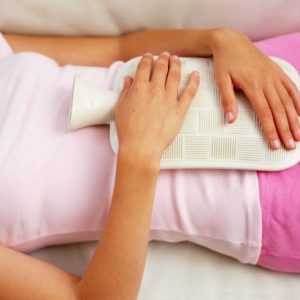
Earlier we mentioned the implementation of specific procedures – “blind probing” and tjubazh. These techniques are used to activate the outflow of bile, they are useful both for children and adults during periods of overeating and weight loss. In children, they are recommended during periods of seasonal exacerbations – spring and autumn intervals. Especially useful tjubazhi with hypotonic type of DZHVP with a sluggish bladder, due to this method, he is actively released from the content.
Tjubazh is performed twice a week, in the morning, after toilet and washing, teeth cleaning. It is important to take a cholagogue breakfast and then put the child to lie on the left side. In this position, the gallbladder is turned upside down, which helps in the outflow of bile simply under the influence of terrestrial attraction. To the right side, heat is applied, asking the children to lie down for 30 to 90 minutes. It is important to help the child not to turn, capturing him by reading or watching a movie. This time is needed to complete the emptying of the bladder.
Cholagogue breakfasts can be:
- solution of magnesia (25%) in a volume of 2 tablespoons of ampoule
- sorbitol or xylitol – two tablespoons
- shaken yolks with the addition of honey or ordinary sugar
- olive oil a couple teaspoons
- juice mixture of choleretic vegetables (carrots, beets)
- juice of radish, with the addition of honey.
To normalize digestion, you need to hold up to seven procedures at intervals of about 5 days. If, when using cholagogue breakfast, there are pains in the abdomen, it is recommended to give the baby a no-shp before the start of the tjubazh or during the process.
Nutrition in children with DZHVP
Important permanent therapeutic and preventive nutrition in children with problems in the biliary system. It is important to change the diet so that the child ate as often as possible, up to six times a day, and portions should be small.
It is important to know which foods and dishes should be excluded from food:
all broths of animal origin and mushroom, in them there is no benefit for children
- All fatty or fried, very spicy dishes
- products with high-melting fats (lard, lamb, goose and duck fat)
- marinades and sauces with vinegar, salt, spices
- Nuts, mushrooms, legumes
- dishes with raw garlic, onion, radish, turnip, radish
- black bread
- millet and meals with it
- buns, buns,
- Chocolate, strong tea and natural coffee
- gum, ice cream, carbonated drinks.
It is important that parents show pressure and firmness in compliance with diet and dietary restrictions, as it is necessary for the child himself. When you use these products, you will experience pain and nausea, malaise. It is important to be honest and explain why it is impossible for these dishes and foods.
In the diet are useful and recommended:
- Useful vegetable soups and cereals, soups with cabbage, milk soups with pasta.
- Low-fat varieties of meat, fish or poultry without a skin in baked form or stewed, cooked in pairs or in a multivark.
- Steamed meat and fish cutlets, meatballs, meatballs, etc.
- Any cereals in cereals and garnishes (except millet)
- Any types of pasta in all their forms
- Vegetables in boiled and stewed form
- Milk porridges thick and boiled
- Dishes with cottage cheese (dumplings, casseroles)
- Eggs in any form, except fried
- Dairy products in any form, except for fatty sour cream and cream (they are only in soups)
- Cheese, except for hot and salty
- Unrefined vegetable oil in salads
- Yesterday’s bread, biscuits, biscuits
- Sweet fruit with berries
- Any vegetables, except dishes with garlic, onions, radish, turnip, radish
- Juices and mashed potatoes from sweet fruits
- Green and weak black tea, herbal decoctions
- Honey and jam, jams, marmalade and marshmallows.
For both types of DZHVP it is useful to include food products with choleretic effect in food, but it is important that they be used during breakfast or lunch. The effect will be in the daytime and the food will be more fully absorbed. These include beets, sour cream, butter and vegetable, carrots, cucumbers, sweet fruits, cabbage.


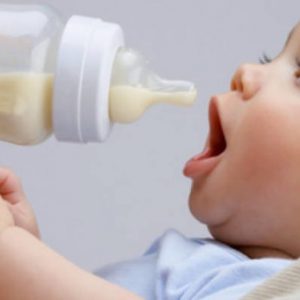

Recommendations for parents: how to treat DZHVP in a child?
This web site is really a walk-through for all of the info you wanted about this and didn?t know who to ask. Glimpse here, and you?ll definitely discover it.
Please share more along these lines? It’s been extremely helpful to me.
With respect-thanks-Any chance you will elaborate?